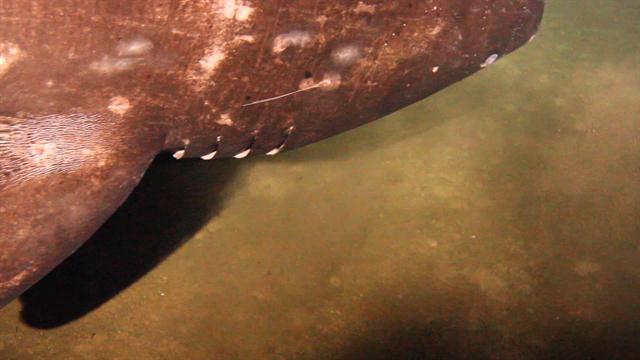By Jane Lee, National Geograhpic
PUBLISHED July 08, 2015
A big part of exploring the ocean involves tossing expensive equipment into the sea and hoping it comes back in one piece. Usually, the instruments return—maybe with an extra dent or two.
And every now and then, there’s a surprise waiting inside: Like footage of a rarely observed Pacific sleeper shark in a place where none had been seen before.
Sleeper sharks, a group of deep-dwelling, slow-moving fish that includes the Greenland shark, can normally be found in the Northern Pacific and Northern Atlantic oceans, as well as the waters around Antarctica and Tasmania.
But the deep-sea shark researchers filmed popped up around the Solomon Islands east of Papua New Guinea.
“We were freaking out,” says Brennan Phillips, a Ph.D. student studying underwater volcanoes at the University of Rhode Island.
Unexpected Cameo
In January 2015, Phillips and colleagues were dropping video cameras, bait, and lights—an instrument package called a drop-cam—into the deep sea off the Solomon Islands as part of their volcano work.
One day, they decided to deploy a drop-cam about 12 miles (20 kilometers) away from an underwater volcano called Kavachi. They wanted to look for “weird” stuff, says Phillips, who was supported by the National Geographic Society/Waitt Grants program.
The instrument ended up 3,074 feet (937 meters) down. When the team retrieved it and downloaded the 7 hours and 45 minutes of footage, they noticed one of the video thumbnails contained a large brown blob. (Watch footage of a Greenland shark blow a researcher’s mind.)
The engineer responsible for processing the camera data has a very deliberate way of doing things, says Phillips. He won’t skip ahead in the list of video thumbnails, despite pestering from the scientists.
But he broke his rule, Phillips says. “Both of us looked at each other and said, we gotta look at that [thumbnail] right now.”
When they opened the file and saw the shark, they started hollering, the volcano researcher says. Phillips knew very little about sharks, and so he sent some screen grabs to experts who could help him identify their unexpected interloper.
A Tricky Identification
The animal seems to be a Pacific sleeper shark, says Marcelo Carvalho, a shark researcher at the University of São Paulo in Brazil.
Usually, experts identify a sleeper shark’s species based in part on its location. The three species—the Pacific sleeper, Southern sleeper, and Greenland shark—have distinct ranges, Carvalho explains.
Since the Solomon Islands are fairly close to Australia, Phillips’ mystery shark could be the Southern sleeper shark, Carvalho says. However, Southern sleepers tend to be lighter in color than the one in the video.
The mystery shark’s color matches that of the Pacific sleeper, as does its gill slits, which are longer than the slits on a Southern sleeper.
Carvalho’s best guess? The volcano scientists filmed a Pacific sleeper shark around the Solomon Islands, which would be the southernmost sighting of that species ever recorded.
Continued Mystery
However, “I wouldn’t be surprised to find that these three [sleeper shark] species are all the same species,” Carvalho says.
The differences between them tend to be slight, and could be the result of geographic variation. It wouldn’t be the first time separate species turned out to be the same one, he adds.
To find out requires studying a lot of good quality specimens—no easy task for sleeper sharks. (Read about a rare shark that inspired sea monster myths.)
“They’re flabby [and] they get putrid very quickly, so it’s hard to preserve them,” Carvalho says. Plus, they can grow up to about 21 feet (6.5 meters) long, which makes storing preserved specimens—if you can get them—difficult.
In any case, Phillips is excited to have filmed a live sleeper shark: Video evidence of the mysterious creatures are rare, and most of it is old.
Phillips even got his shark on high definition film: “It’s up close and personal.”




